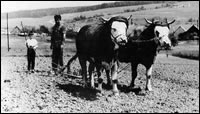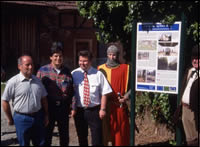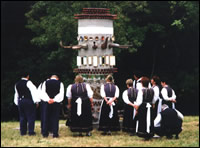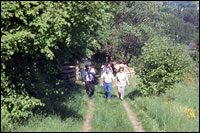| ||||||||||||||||||||||||||||||||||||||||||||||||||||||||||||||||


The Cultural Landscape of the Spessart Region
Location of the project areaThe Spessart is a large, mountainous region still dominated by woodland. Together with the Odenwald and the Rhön it forms the northern border of Southern-Germany. In the south of the Spessart we find the river Main, which separated the Spessart from the Odenwald in the west. The river Main provides good conditions for shipping, and it seems like it was used -for this since the Neolithic age, giving access to the Rhine-valley, which can otherwise be reached via various passage-ways through the Spessart - one of these is still used today by the A 3, the most frequented highway of Germany. Cultural landscape: the Historical backgroundThe Spessart was settled first at the beginning of the Neolithic period. The human impact has changed this landscape several times, from a forested area to a mainly agriculturally used area back to a forested area. Especially in the 19th and the first half of the 20th centuries, poverty struck the area, thus creating an image of a landscape neglected and lacking history. The main aim is to understand the development of the landscape through history and the mechanism of interaction between man and his environment. The project shall also help to change the attitude of the local people toward their own landscape, to ”give it back” its history. The results are directed toward spatial planning and landscape management, where they shall advise and help foster the dialogue with developers and planning institutions. ResearchResearch will be done by survey, geo-physical methods, the use of GIS, archive studies and mapping of biological indicators for human activities. It is done in close cooperation with universities, scientific research institutes and other museums. Special work will be done in studying the irrigation systems in the Spessart. CommunicationCommunication to the public and special interest groups will be involved by intensive press work, internet, seminars and open forums, exhibition, the construction of physical and virtual pathways, publication of folders, lectures and preparation of education materials for schools. Sustainable managementThe project team is involved in the processes of spatial planning, Agenda 21 and related areas. The project shall help to foster plans of sustainable management, cultural tourism and intelligent land use. Therefore it organizes seminars and open discussion forums with local administrations, developers and local people.
Project team: The Archaeological Spessart-Project Scientific Research Institut and Museum of Nature Senckenberg |
|




|
|
|
|
|
